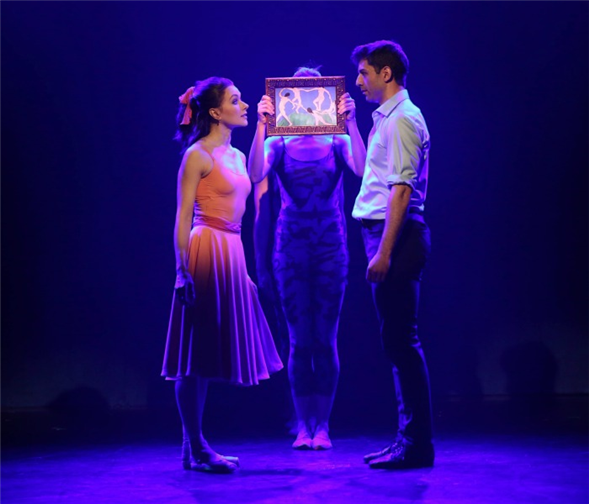Translate Page

Writer David Thompson on how he helped build The Beast in the Jungle
---
When Tony-winning director-choreographer Susan Stroman said that the protagonist of The Beast in the Jungle was "waltzing through life," everything clicked. Stroman, Tony-winning composer John Kander and Tony-nominated book writer David Thompson had been talking about adapting Henry James' 1903 novella for the stage, but they weren't quite sure how to approach it. Then she used that phrase. "It became, in many ways, an internal metaphor of how we were going to tell the story," says Thompson about The Beast in the Jungle, the trio's world-premiere "dance play" at the Vineyard Theatre.
That may seem like an odd designation for a show created by three masters of the American musical. Their previous collaborations include The Scottsboro Boys, Steel Pier and And the World Goes 'Round, and their artistic relationship dates all the way back to the 1987 Off-Broadway revival of Flora, the Red Menace. But The Beast in the Jungle is its own animal: a play with frequent musical interludes, but no songs.
It's not because Kander's longtime lyricist, Fred Ebb, passed away years ago. It's because the artists realized this unique structure was the best way to tell the tragedy of John Marcher (Peter Friedman), an old man looking back on three chapters of his life and realizing that, due to an overwhelming and irrational fear, he missed his chance at love.
Thompson insists they were not "out to break a form or try something different. But very quickly we knew that the idea of lyrics wasn't part of this. The sung part of storytelling didn't feel organic and we wanted to use dance as the major DNA of the way the piece was related."
{Image1}
The writing process began with Thompson drafting a full script without leaving specific spaces for dance; Stroman's choreography and Kander's music came later. Yet most scenes weave the three together seamlessly.
Kander's lush suite of waltzes is key to making that work, and harks back to Stroman's insightful comment about the source material. "Kander thought it would be interesting to write a score that was all in three-quarter time so we were living in the world of the threes," says Thompson, similar to "a Ravel waltz, where the music constantly is turning in on itself." The music also mirrors Marcher's mental state. "He can't move forward," the writer says. "Suddenly we had a musical vocabulary, a dance vocabulary."
Initially, Kander sent Thompson and Stroman short musical sketches via text. But when they sat down to craft the sequences, he became very specific about how each waltz functioned within the narrative. "If somebody slams against the wall, the music will too," explains Thompson. "Kander puts his hands on the piano and music comes out that's so evocative that, in a way, you don't need somebody to sing to tell you what you're feeling."
Stroman's choreography, a blend of balletic and contemporary dance styles, also prioritizes the story. "Every single move that she's choreographed -- every single move -- is tied to the narrative," says Thompson. "If the goal is to get from point A to point B in the storytelling, there's not a measure that goes by that doesn't take you deeper into the story or, more importantly, into the characters."
And while the creative team has taken a number of liberties with the 115-year-old source material, which is now bookended in the present with Tony Yazbeck playing the young Marcher in the 1960s and 1980s, Thompson believes their dance play taps into the timeless essence of the tale in a simple way. "To get to simple, you have to really be a fierce editor," he says. "It requires the ability to strip away what's not essential, but what you leave behind has to be completely and precisely delivered."
To read about a student's experience at The Beast in the Jungle, check out this post on TDF's sister site SEEN.
---
Erika Gould is an editorial and advertising writer who is passionate about theatre.
Top image: Irina Dvorovenko and Tony Yazbeck in The Beast in the Jungle. Photos by Carol Rosegg.
TDF Members: Go here to browse our latest discounts for theatre, dances and concerts.